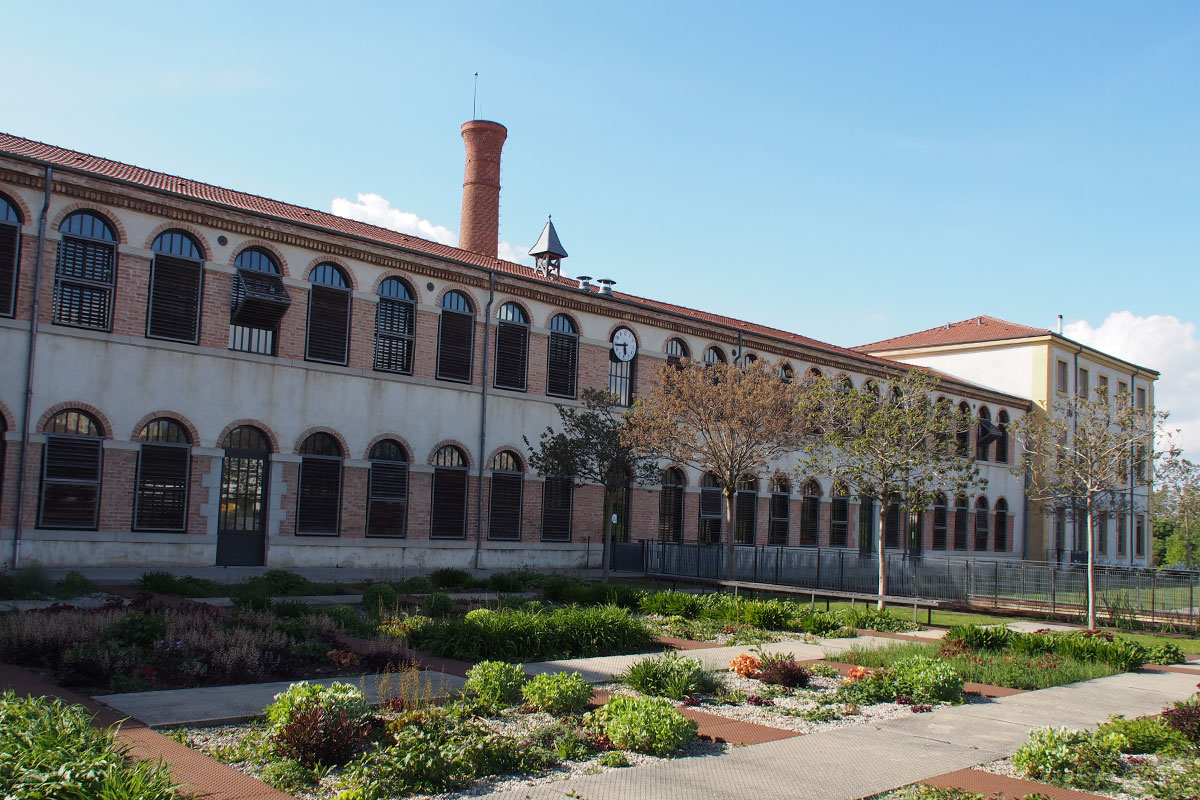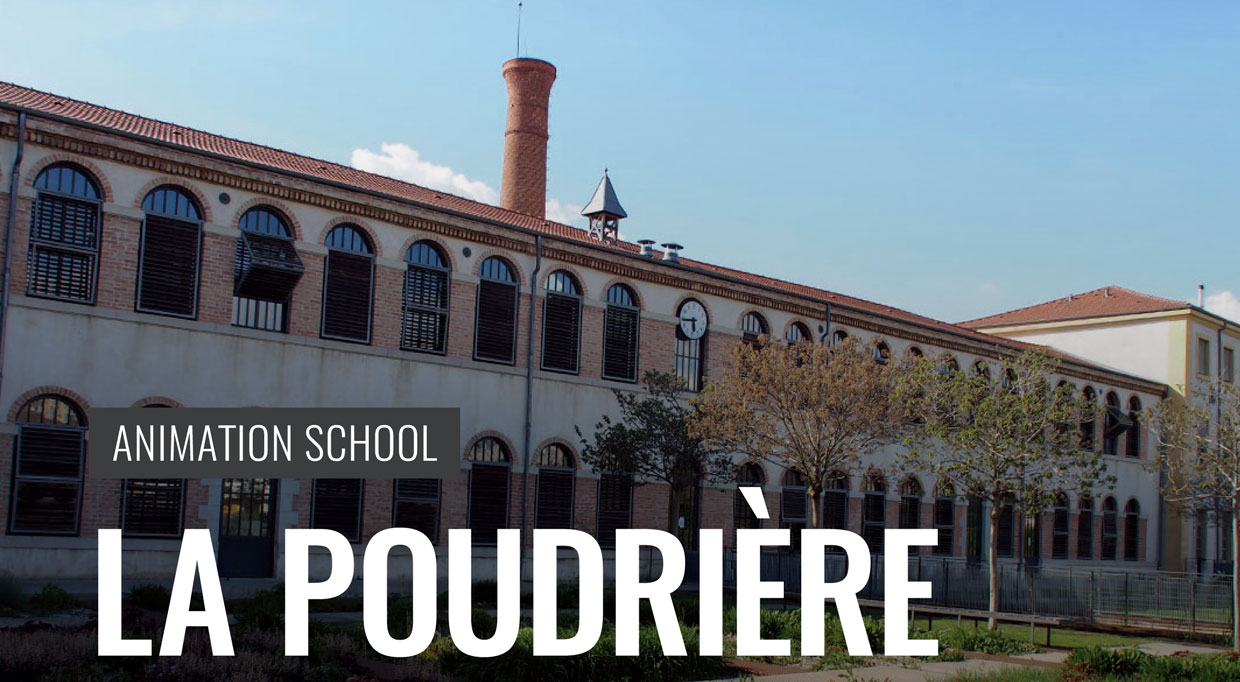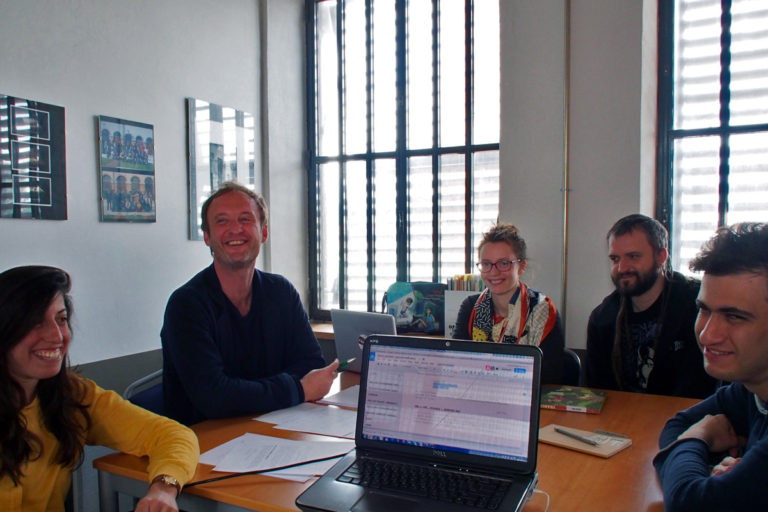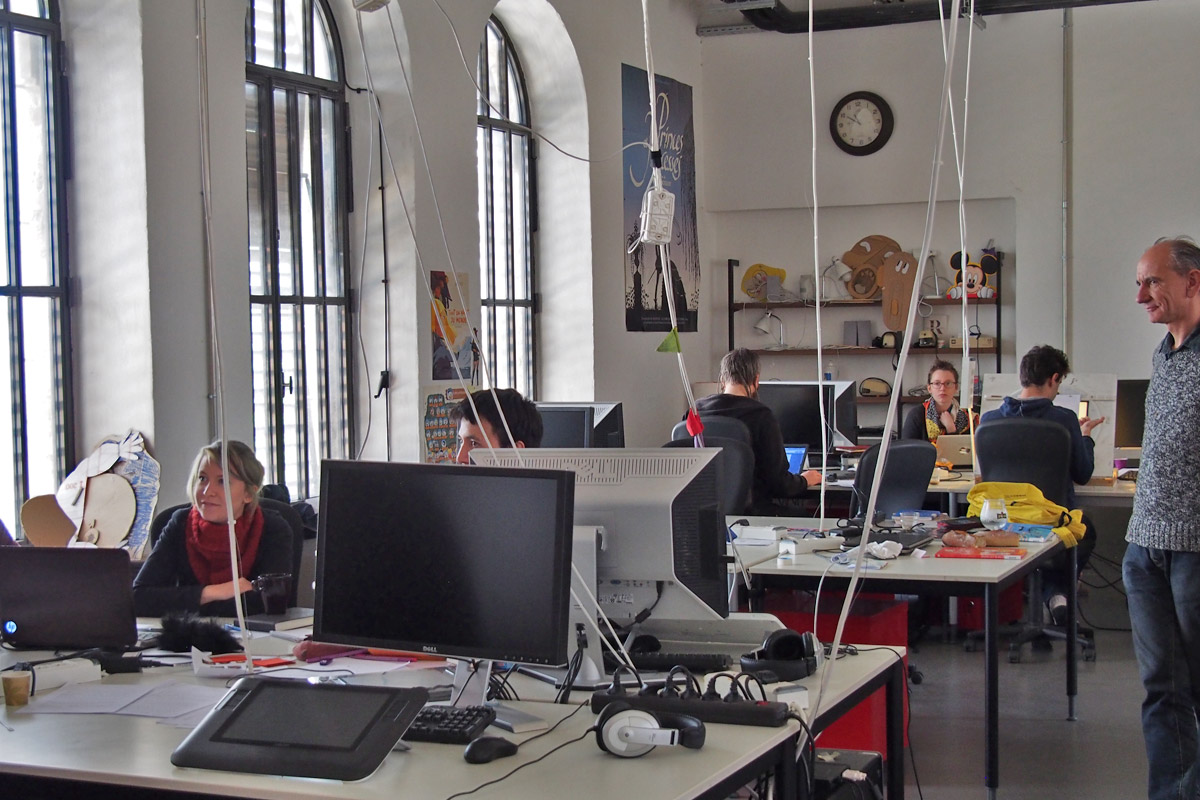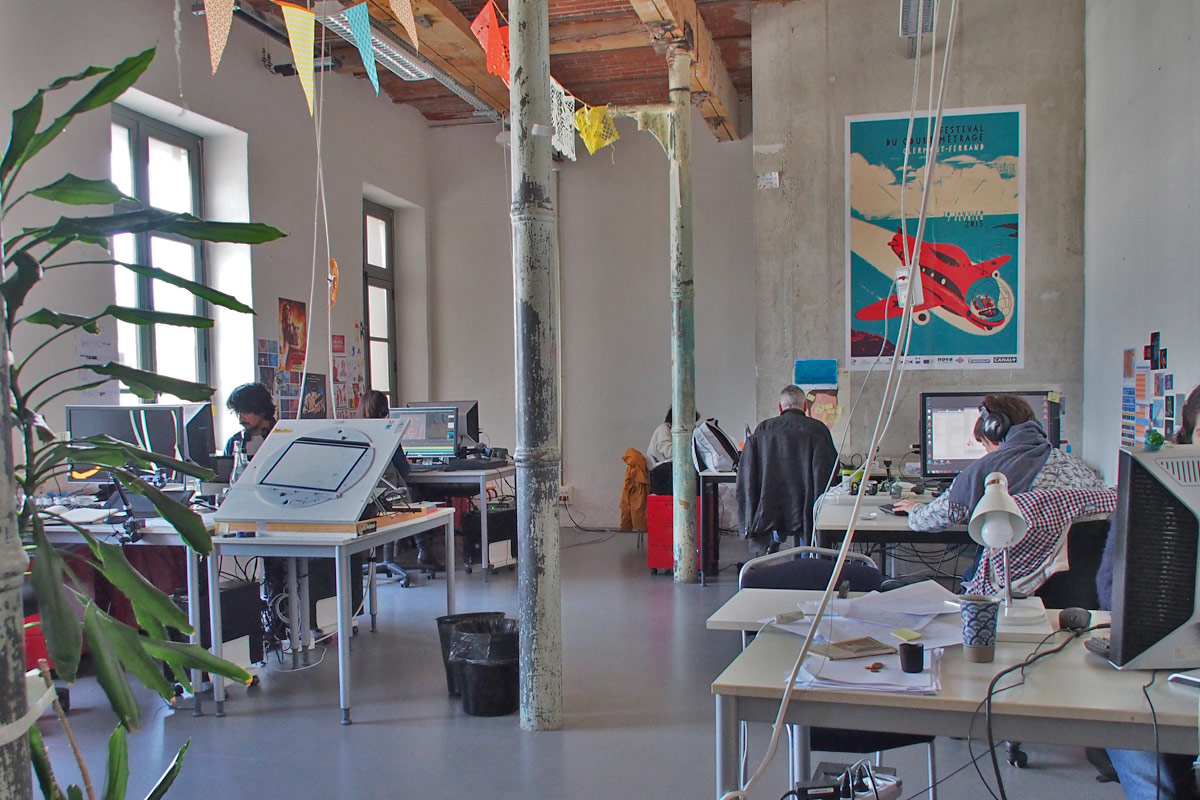La Poudrière, an animation school located in Valence, France, and created by the animation studio Folimage, is one of the most prestigious animation schools in the world, which uniquely offers courses aimed at those who would like to be animation directors. Their educational program is distinctively developed to meet the needs of those who wish to become directors of animated films, as well as animation studios that want talented people who can start directing right away. To name a few, renowned graduates include Remi Chayé, (the director of Long Way North) and Benjamin Renner (the director of Ernest and Célestine and Le grand méchant renard et autres contes, César 2018 for best animated feature film).
Their tailored program meeting personal needs and the focus on storytelling is one of the distinguishing features of the school. Because of the rigorous selection, the number of students who are admitted to the course is very limited, with an average of nine students per year. Selected students have great artistic diversity. They are given plenty of opportunities to flourish their potentials and artistic talents in the two years at La Poudrière.
Students are asked to work in similar conditions as professionals in their two years at the school. For example, they are given different constraints that you would have in real life, such as a firm deadlines, themes, and techniques. Emphasis on storytelling in the course program would help students direct a film that would reach the heart of the audience. This is why graduates are equipped to start their professional career as film directors, right after graduating the school, and are regarded as indispensable talents in the industry.
I sat together with Annick Teninge, the director of the school, to learn about the the history, the uniqueness of the school, and how they are nurturing talents for the future animation industry. Also, I learn from Laurent Pouvaret how the teaching staff are carefully selected to meet each student’s needs.
Created from the idea of Jacques-Rémy Girerd
Hideki Nagaishi (HN): Could you please give us the background story of La Poudrière? How was it all started?
Annick Teninge: La Poudrière is a very unusual school, since it was created on the initiative of a production company – Folimage – not by the State or by private or commercial companies.
It was the idea of Jacques-Rémy Girerd, who set up his studio Folimage over 30 years ago. He decided to create this school because back then, at the Folimage studio, there were lots of young talent who came, like Alain Gagnol, Jean-Loup Félicioli and others, who would work in the studio when the first TV series were being made. Alongside their work on the series, they would continue to learn the work of a film director by making short films.
But then, the animation industry became much more developed in the 80s in Europe and especially in France, thanks to all sorts of economic reasons and financial support, etc. The production activity became much more compact. Jacques-Rémy Girerd realized there was no more time to train new directors properly. The system of apprenticeship, whereby you would learn the job with your senior, was no longer possible in such fast production cycles.
There were great schools in France – there still are, schools with a great reputation such as Les Gobelins, Supinfocom for 3D, and others. But there was no school where you could specialize in directing films. That’s how La Poudrière was born more than 15 years ago.
The starting point was to create an international school, or at least, a European school, with few students. We have, on average, nine new students per year, people who have already been trained in animation techniques.
Also, it’s a school with a further education status, so that aside students on an initial training, professionals are able to go back to school as trainees receiving vocational education.
Learning every aspect of directing an animated film
HN: Could you please describe what the uniqueness of the school is?
Annick Teninge: The uniqueness of our school is the fact that students get an opportunity to study the art of animation filmmaking, full-time. They work very hard for two years, focusing on learning storytelling, writing, staging, editing, music and sound design. By the time they graduate, they have a real head start, as they’re able to manage complex projects and to contribute to the quality of French animation.
During the two years, we have a very structured curriculum, but we make sure we don’t impose standards. We don’t have any teachers here. There is a head of studies, Laurent, who comes up with a curriculum and then, we bring in professionals. Our students get to meet around 80 different professionals throughout the year. So there is no format.
And this is why we only have nine students per year. That way, they get very personal training, even if they are all following the same curriculum.
Another thing which distinguishes us as a school, is that right from the start, we focus heavily on storytelling. This doesn’t mean that we’re not interested in experimental films and more original formats, but simply we consider that learning to direct requires a strong knowledge of how to tell a story – even if it isn’t told in a traditional way – and then seeing that you can move the audience with the way you direct. Students can move on to more experimental films later, but to start with, we want to make sure they learn the basics.
The first year of the school
HN: How is the school course structured?
Annick Teninge: The first and second years are very different. Basically, we have three terms per year. Unlike the French educational calendar, which is peppered with holidays, we start in September, stop for Christmas. We then have a break in April and wrap up in July. So that’s three blocks.
The first term: working on different skill sets
AT: The first term of the first year is devoted to doing lots of very short exercises. Since people are coming from very different backgrounds, they don’t necessarily all have the same skill set, so we break down the job of a director into small chunks. For example, they’ll spend two days doing an exercise in animation, then two days doing sound work, another couple of days working on editing, sound recording, filming actors to learn about framing, etc. We come up with all sorts of exercises, which gradually gives them a clearer understanding of each and every aspect of the job as a film director.
The second term: making a one minute film in professional working conditions
AT: In the second term, they get to make their first film. They’re required to apply what they’ve learnt during the first term and need to keep their film to one minute maximum. Since we are training them for the professional world, if their film isn’t finished within the allocated time, they have to stop and move on to the next exercise.
From the very beginning, we try to prepare them to professional working conditions. Unless you have a patron, you’re always going to have to work around a set of constraints. These are the conditions we’re preparing them for. So there is a framework for each exercise – either a theme, the length of the film, the planning, or technical constraints – they must learn to follow the rules right from the very beginning. But within that framework, they have a lot of artistic freedom. They can select the technique they want to use, the way they want to tell the story, their genre, as long as they follow the set of constraints.
We set a different theme each year. Last year, it was “A window into the future”. This year, it’s “Monsters”. If a film has a strong narrative, it’s easier to tell if the direction works. Do the viewers understand the story? That’s the initial phase. The next step is to figure out whether the story has moved them.
We give them technical means for their films and ask them to present a dossier, so we can green-light their projects. Then, they work on the schedule, the budget with Laurent, who supervises them – they get an allocation for technical support with compositing, for example, or a director of photography if there’s a lot of volume (puppet films), or an editor as it’s compulsory for their films to be edited by a professional, and to fit into the one minute allocation.
If they go over one minute, we just cut. They’re responsible for the way they use the budget. They can choose to use it for music, compositing, etc. but they know it’s limited. They have to make the most of it.
The third term: experiencing co-production
Annick Teninge: After this second term, it’s a complete shift. We go back to the writing process. We open up to outside candidates for applications from Europe – we’re linked to European programs. At this point, we return to the writing process, after having experimented with film and we get participants to focus on another format than the short. This is when they first get to work on series.
HN: What do you mean when you say the applications are open to outside candidates? Is it for funding?
Annick Teninge: For this program in particular, we get funding from MEDIA who offer financial support for mobility. So we host young European professionals who are interested in learning how to make series. They work in groups to develop series concepts.
HN: Are the projects ever completed?
Annick Teninge: That’s not the aim. We’re really here to train, so it’s very different. It’s all about team work. We only get them to work on the very early stages of development since they have little time. There’s no production involved. It’s about focusing on writing and concept development. We mix nationalities. You’ll see, there are four groups here. Two of them are working in French, and the other two in English. Each group works on two exercises. One is to adapt a children’s book into a TV special. The other consists in early stage development of a concept for a TV series based either on a children’s book or on an original idea.
Participants have three weeks to write the screenplay for the TV special – that’s what they’re finishing this week. Then, they have seven weeks to work on the concept. If anyone lacks interest in any of the projects, we’ll try to come up with another project, but generally participants are very interested in these exercises, so we mix the two.
They work in French and in English.
They work on a TV special as if they were in the industry. A normal format would last 26 minutes, but it’s much too ambitious for them, so we ask them to produce a 13 minute special.
HN: So, in the third term, they would focus on a 13 minute TV special for three weeks, then for seven weeks, on a TV series concept which could be the adaptation of a book or an original idea.
Annick Teninge: For this project, we work with a Danish school, the Animation Workshop in Viborg.
HN: That’s one of the schools they collaborate with in the third term.
Annick Teninge: We wanted this project to feel like our students were part of a European coproduction. So at one point, once they’ve developed the concept a little, each group selects a representative who goes off to Viborg for a week to supervise the animation that the students out there produce over the course of a week. Now, that’s particularly interesting because they need to learn to communicate from a distance and to prepare the work in advance. That’s something they haven’t done so far because they have been working alone on shorts.
The second year of the school
HN: How does the second year look like?
Annick Teninge: During the second year, the main project is their graduation film. At this stage, we consider they have enough basic knowledge to engage in a bigger project. We don’t set a theme, they can choose their story, however, there is a set length – four minutes, including credits. That’s the main project of the year but they do have others.
They start working on this project early in the year. They have to produce a very detailed dossier. Then, they manage the whole production of the film. They spend a lot of time on the script, the storyboards.
In the second year, we make sure they don’t focus solely on their graduation film. We know there are tough times when they get exhausted, so we organize short breaks to get them to focus on something else. For example, we get them to make the trailer for Cartoon Movie. It’s a week-long workshop, for which we invite a director and everyone collaborates. Yes, we made the crocodile film which was used for Cartoon Movie 2016.
This year, it was Claude Barras, the director of My life as a Courgette, a feature-length animation, which is due to be released shortly. We order the music from a composer ahead of time, as a week isn’t long to make a trailer. So, actually, they animated the crocodiles to music.
In second year, they also do two other things. These are very short films, to play around with very short formats. They participate in something many other schools in France compete in – Les Espoirs de l’Animation – a talent competition. The whole idea is to simulate a commission for a children’s TV channel, such as Gulli, Tiji or Canal J, which are French children’s TV channels. So this is offered to 6 French schools. It lasts a month. They have to make a one-minute film on a theme given by Canal J, within a month. Lagardère organizes that. It’s called Les Espoirs de l’Animation.
HN: Is it only offered to these five or six schools?
Annick Teninge: They’ve offered to several French schools. But then, according to the curriculum, it’s not always feasible, so there are generally seven or eight of them. This year, there were only five schools, I think. They will show them at Annecy, at the festival. The films our students are making this year will be presented in Annecy. They can choose Tiji if they really want to target very young children, or Gulli or Canal J.
Professional teaching staff
HN: How do you select the lecturers who come to La Poudrière?
Laurent Pouvaret: We look for professionals who have a wide vision of animation. People who don’t confine themselves to just one thing and who can help out all of our students. That’s the first thing.
The other thing is that we seek out people who don’t offer ready-made recipes. We like people who listen to students. People who are keen for an exchange.
Over the years, we’ve expanded the circle of animation professionals we trust. We work with them a lot. And each year, we try to add people who fit these criteria.
Annick Teninge: They are people who are working. We get them to come in for a day or two, because it’s interesting for them and they find it enriching, but their main activity isn’t at all teaching. That’s what we’re really interested in.
HN: Do you mainly invite people from Europe?
Laurent Pouvaret: From France, mostly, and then from all over Europe. And sometimes even Canada.
Annick Teninge: When it’s a week-long workshop, we tend to invite people from further afield, like Koji Yamamura, Theodore Ushev, or Russian filmmakers. But that’s for a week maximum due to budget reason.
Diversity is key
HN: The program is great. How do you select students? Graduates seem to have different backgrounds and artistic styles.
Annick Teninge: When we recruit students, we select people who already have a strong technical background – at least we try – it’s always a gamble since we’re a school, but we focus on getting people who really want to direct. People who understand that it’s a very specific job, in which you need to be able to take charge of a full project. It’s not just about being a good animator. We focus on taking on board people who have very unique specific and personal graphic styles.
HN: could you give any advice to young talents you would like to apply to your school in the future? What kind of skills should they develop for their application to be strong?
Annick Teninge: I think you would need to really want to make films. I know it sounds obvious, but you need to want to tell stories, to reach out to an audience and to be the bearer of an imaginary world. You need to be carried by a strong will.
There is a director I really like, he talks of “artistic necessity”. You know, it’s really hard. No one is waiting for you to make a film and succeed. To make a film, you need to have an idea, to carry it, to convince lots of people that it will come to fruition. So, you really need to be driven.
You need to have a world in mind, and then it’s lots of work. It’s technique – and yet, one shouldn’t think that, because they are a good animator, they will succeed. There is far more to it than that.
In the applications we receive, we see lots of candidates who dream of cinema, but I think you can’t just say “oh, I’d love to do this job!” It needs to come from a very strong internal drive. Otherwise, it’s just too hard.
Because you see, one of the traps with animation, is that the production times are so long – after all, isn’t it crazy to think that you could film something in live-action, but you instead decided to recreate it shot by shot! Production takes up a huge place and requires so many skills! So, you can easily get lost in the making of a film, in technical details, in wanting to make a beautiful picture, or a beautiful animation. But then, it’s easy to lose sense of the big picture.
That’s why we try to remind our students of the following message: “forget about technique”. The animation isn’t always perfect – that really doesn’t matter. But, you need to think of the film. And that’s why we often organize outings to the cinema. We also go to the theatre. The idea is to see the big picture, otherwise you get lost in the process. It’s really important to get out of that. And that, I think, is a common concern in animation.
We would like to express our sincere gratitude to Charlotte Wells for her invaluable support for the interview and editorial of this article.


